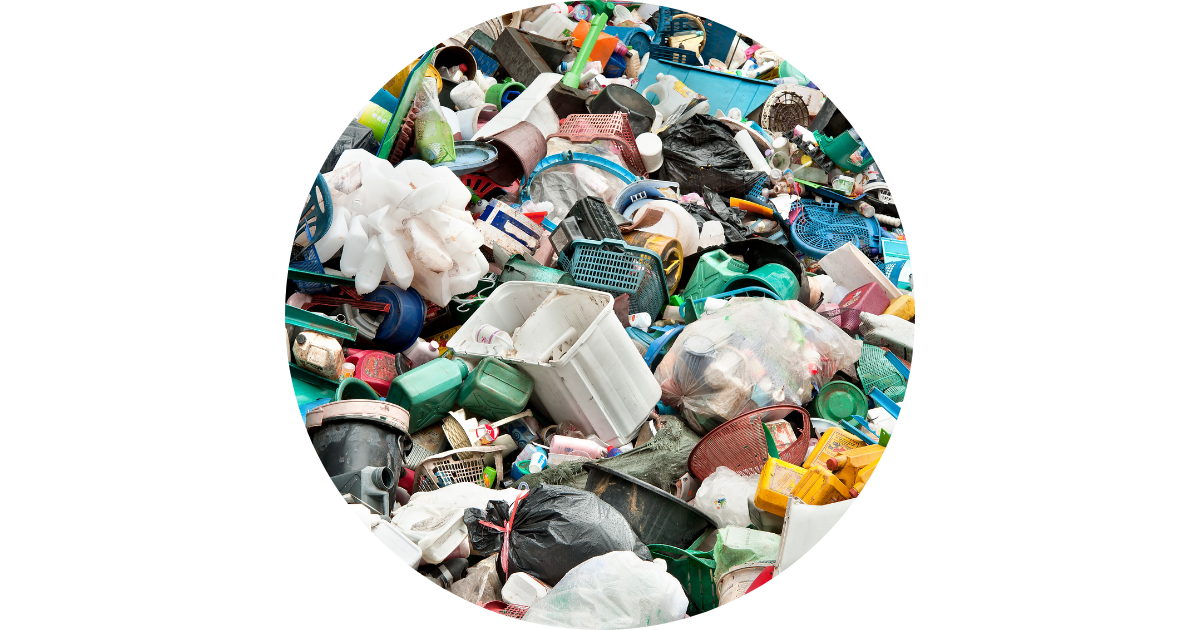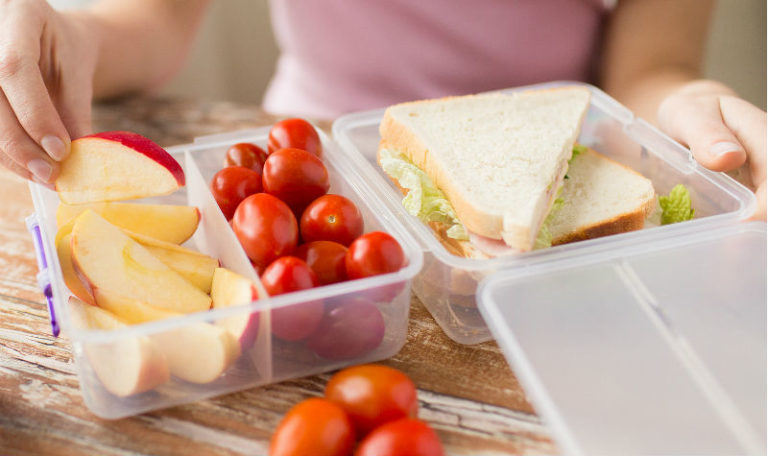Phthalates
What are phthalates?
Ortho-phthalates, commonly referred to as phthalates (pronounced THAL-eights), are a class of chemicals that are used to make plastics, primarily polyvinyl chloride (PVC or vinyl), flexible. The chemicals also serve various functions in cosmetics, personal care, and cleaning products.
How am I exposed to phthalates?
Companies put phthalates in many types of products.1, 2 They include:
- PVC/vinyl building products such as wall coverings and flooring
- Cosmetics and personal care products, such as nail polish, perfume, shampoo, and lotion
- Packaging for many products
- Medical devices, such as blood storage bags and tubing that are made with PVC
- Home products such as sealants, tablecloths, shower curtains, furniture upholstery, garden hoses, wires, and cables
- Vinyl gloves used for food handling and other purposes
- Coatings for medications
- Scented cleaning products such as detergents
Because phthalates are not chemically bound to the plastic they are used in, they migrate out over time and contaminate indoor dust and air. People are exposed to phthalates through indoor dust and air, from using products such as cosmetics, and from food.
Phthalates contaminate indoor dust and air. Because phthalates are so widely used in building materials as well as products used indoors, they are widespread indoor pollutants.3 Products like vinyl flooring, shower curtains, and toys release phthalates over time to the air and they build up in dust. With their greater hand-to-mouth behavior and more contact with the floor, children are likely to have greater exposure through ingesting contaminated dust.
Phthalates use in cosmetics and personal care products leads to direct exposure. Studies by the CDC find that women consistently have higher exposure to certain phthalates, likely because of greater use of phthalate-containing cosmetics and personal care products.4 Women of color have particularly high exposures to these phthalates.5
Phthalates are in the food we eat. Phthalates have been found in dairy products, meats, seafood, fruits and vegetables, and fast foods.6 Phthalates are not intentionally added ingredients but make their way into food when they escape from food processing equipment, food packaging, and food preparation materials, contaminating food all along the supply chain.
Why should I be concerned?
Phthalates are well-known for their ability to disrupt the hormonal system, with extensive laboratory research concluding that exposure to phthalates reduces testosterone levels and leads to an array of male reproductive problems.7 Effects include malformations in organs needed for sperm development, hypospadias (abnormal urinary openings), and undescended testes.8 Studies in people provide evidence that exposure levels are already high enough that they may be harming male reproductive development.9
Because phthalates are in so many products and contaminate our food, tests on U.S. residents find 99% of adults and children are exposed.10
How can I reduce my exposure?
- We can reduce exposures for everyone by winning policies and market actions to replace phthalates with safer substitutes. You can let your favorite retailers, brands, as well as policymakers know that you want them to ban ortho-phthalates and PVC and make sure substitutes are safer.
- Avoid PVC/vinyl products and packaging. PVC products contain problematic phthalates, but also create toxic threats in manufacturing and disposal.
- Avoid PVC building materials like windows and doors. Opt for wood instead.
- For food storage, use glass or stainless steel.
- Choose natural fiber shower curtains rather than PVC.
- Avoid PVC toys, school supplies, and office supplies.
- Avoid luxury vinyl and other PVC flooring, wall coverings, and siding.
- Avoid the ingredients “fragrance” and “parfum.” Phthalates can be hidden in fragrances in many products, including cosmetics and cleaning products. Even “unscented” isn’t good enough—this can just mean that chemicals are used to cover up the smell of other ingredients. Products with a Safer Choice seal do not contain phthalates in the fragrance, and Safer Choice also has a fragrance-free label.
- Eat less processed food and cook more. Many nutritionists recommend reducing consumption of highly processed foods to promote health. That advice may also reduce exposure to phthalates associated with food processing. For example, studies have shown that eating out is linked with higher phthalate exposure. With phthalates present in many types of food, however, we need a system-wide solution to stop contamination of food with these hormone-disrupting chemicals.
What’s the solution?
It is impossible for us to shop our way out of this problem. And we shouldn’t have to. When you walk into a store, you should be able to trust that the products on store shelves are safe.
Companies shouldn’t sell products with dangerous chemicals—especially as scientists continue to learn more about the “silent epidemic” caused by the cumulative impact of all the toxic chemicals we are regularly exposed to. And our state and federal governments shouldn’t allow chemicals on the market until they’re proven safe.
The only way to protect everyone from toxic chemicals like phthalates is to change policies at government and corporate levels to make sure that safer solutions are the norm.
We’re fighting every day to protect you and your loved ones from toxic chemicals like this. To join our fight, please consider making a donation, taking action with us, or signing up for our email list.
Healthy Choices
What is the truth about recycling?
When it comes to plastic, it’s now abundantly clear that recycling can’t turn plastic into a safe and sustainable material. The only real solution is to reduce our reliance on plastic by moving to safer and reusable materials.

Our Key Projects
-
Agency for Toxic Substances & Disease Registry Toxicological Profile for Di(2-Ethylhexyl)Phthalate (DEHP); U.S. Department of Health and Human Services: 2022.
-
Agency for Toxic Substances & Disease Registry Toxicological Profile for Diethyl Phthalate; U.S. Department of Health and Human Services: 1995.
-
Mitro, S.; Dodson, R.; Singla, V.; Adamkiewicz, G.; Elmi, A.; Tilly, M.; Zota, A., Consumer product chemicals in indoor dust: a quantitative meta-analysis of U.S. studies. Environ Sci Technol 2016, 50, (10661-10672).
-
Centers for Disease Control and Prevention Phthalates Factsheet. https://www.cdc.gov/biomonitoring/Phthalates_FactSheet.html (July 4),
-
Zota, A. R.; Shamasunder, B., The environmental injustice of beauty: framing chemical exposures from beauty products as a health disparities concern. Am J Obstet Gynecol 2017, 217, (4), 418.e1-418.e6.
-
Pacyga, D. C.; Sathyanarayana, S.; Strakovsky, R. S., Dietary Predictors of Phthalate and Bisphenol Exposures in Pregnant Women. Advances in Nutrition 2019, 10, (5), 803-815.
-
US. Consumer Product Safety Commission Report to the U.S. Consumer Product Safety Commission by the Chronic Hazard Advisory Panel on Phthalates and Phthalates Alternatives; Directorate for Health Sciences: Bethesda, MD, 2014.
-
Foster, P. M., Disruption of reproductive development in male rat offspring following in utero exposure to phthalate esters. Int J Androl 2006, 29, (1), 140-7; discussion 181-5.
-
Radke, E. G.; Braun, J. M.; Meeker, J. D.; Cooper, G. S., Phthalate exposure and male reproductive outcomes: A systematic review of the human epidemiological evidence. Environment International 2018, 121, 764-793.
-
U.S. Environmental Protection Agency America’s Children and the Environment, Third Edition; Biomonitoring: Phthalates; 2017.




